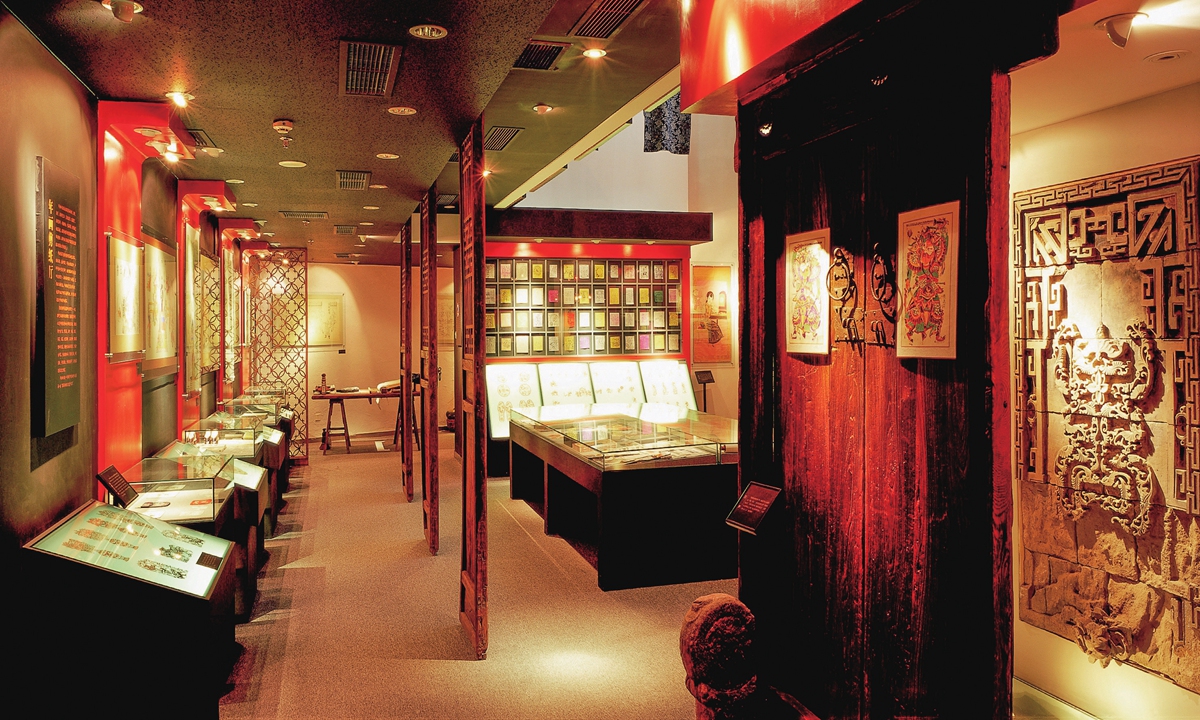ARTS / ART
Chinese creativity set to inspire world with first intangible cultural heritage major
Path to preservation

The Tiaolongmen Museum at the Feng Jicai Institute of Literature and Art at Tianjin University Photo: Courtesy of Tianjin University
Seven young Chinese are eagerly awaiting a very special admission letter to Tianjin University confirming they will be the very first batch of students in China to major in the interdisciplinary discipline of Intangible Cultural Heritage (ICH).
Unlike many "cultural heritage" courses in China and overseas in which intangible cultural heritage is a sub-discipline, China's top ICH resources are driving this new major so that the country's unique creative experiences in the ICH field can be shared with the world.
New way of development
Getting ready to start lessons in August, the master's program is special as it not only builds a bridge between ICH and the humanities and natural sciences, but also resolves an issue that has long puzzled the cultural heritage field: How to provide more targeted training to students.
Guo Ping, the school's teaching and research department director, revealed to the Global Times that the ICH Management major is not only new for China, but for the world.
"China sees management skills as particularly important for future ICH talents, they will have to know how to promote China's legacies around the world," Guo noted.
Su Junjie, an ICH Chinese scholar with years of teaching experience at Deakin University in Australia, told the Global Times that he had never heard of the ICH management program, but predicted that students will be trained as professional "agents" who can build a bridge between ICH inheritors, communities, governments, social institutions and academies.
According to Guo, the new course shows ICH conservation in China has moved on from "rescue and protection" to "science-oriented protection."
Fan Xingyu, a Chinese ICH researcher told the Global Times, that the prolific ICH resources in China makes it possible to explore creative paths of development.
The relatively new concept of ICH was first confirmed at the Round Table of Ministers of Culture in Istanbul, Turkey in 2002. By 2020, China had risen to first place for ICH with 42 inclusions on UNESCO's World Intangible Cultural Heritage List.
"'Creativity and determination' are at the core of China's ICH development. These qualities can show the world China's experience," Fan noted.
Chinese experience
In 2004, only two years after the concept of ICH was introduced to the world, the field's pioneer Xiang Yunju published the book Oral and Intangible Heritage of Humanity, an early work that helped lay the academic foundation for the ICH research.
UNESCO representative Yasuyuki Aoshima called the book "the world's first study of intangible cultural heritage."
With this work as a foundation, over the following decade China carried out a nationwide campaign to rescue the country's ICH with the clear goal of establishing comprehensive protection systems by 2010.
The establishment of the 24 National Cultural and Ecological Protection Sites and a "representative inheritor list" are two examples of the results of these efforts.
"China's inheritor list shares the same people-oriented philosophy as Japan and South Korea. And the 24 pilot sites introduced China's unique view of ICH with regional cultural diversity, such viewpoints brought Chinese ICH to life," Su explained.
Amongst the 24 sites, the Minnan Cultural and Ecological Pilot Site was founded in 2007. The scope of the pilot site includes 58 national-level ICH projects. By 2021, China had 3,063 ICH inheritors working to preserve its disappearing cultural heritage.
"Though such targeted solutions emerged in consideration of China's own ICH situation, these strategies can still inspire the world to think about how ICH can be viewed," Fan noted.
Given such national-level efforts, ICH scholars at Chinese higher educational institutions around the country began exploring ways to revive regional intangible legacies.
Sun Yat-Sen University in Guangdong Province and Tianjin University are leading the way when it comes to literature and folk ICH research, Yunnan University in Yunnan Province has been exploring the province's rich ethnic minority cultures, and Fudan University in China's hub Shanghai has been guiding students on how to incorporate ethnological and natural science subjects into the study of ICH.
Su noted that besides him, a new generation of Chinese ICH experts have updated their views so that they no longer see ICH as an "object to be analyzed" but are now focusing more on ICH's cultural and social context and how to introduce it to people's daily lives.
This mindset has led to the creation of ICH experiences such as events in which ICH inheritors can interact with audiences and the incorporation of ICH into media productions such as the traditional "flower" handicraft ronghua's appearance in the hot TV drama Story of Yanxi Palace.
"China's efforts to include ICH into everyday activities are inspirational to the world because getting people involved is the way to ensure these legacies will be passed on," Fan noted.
